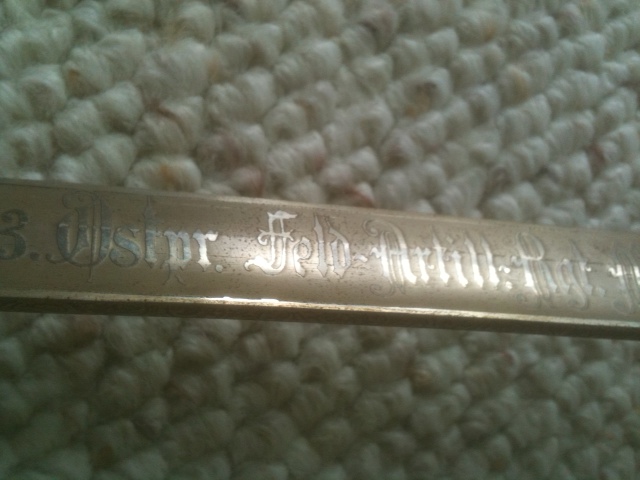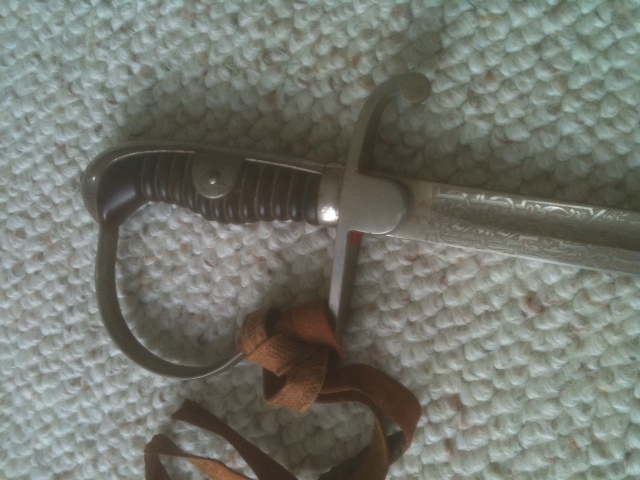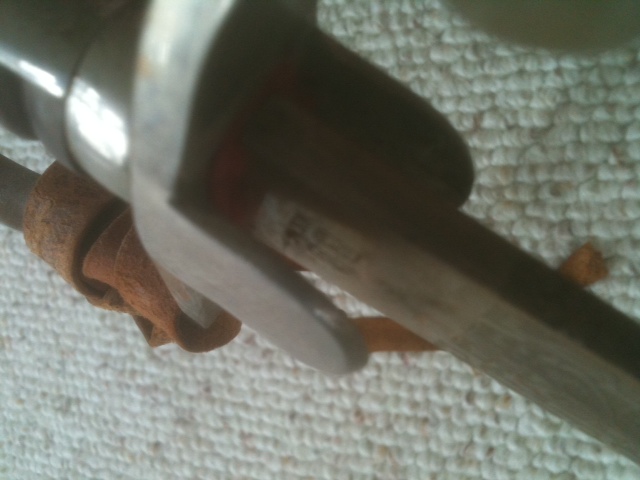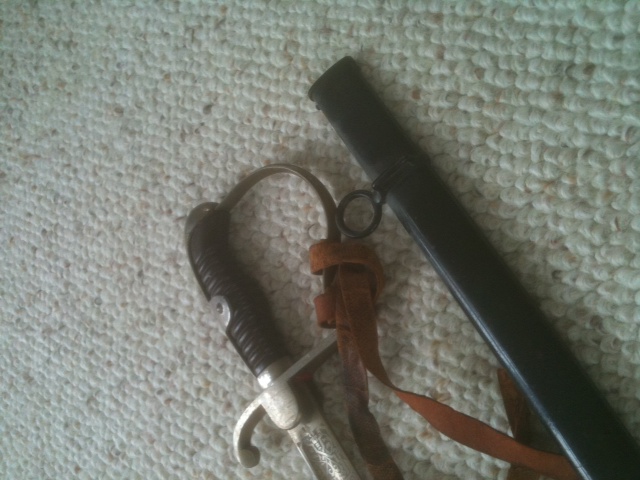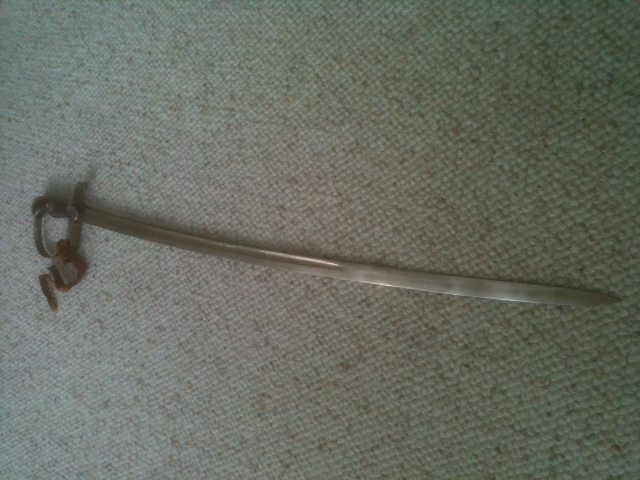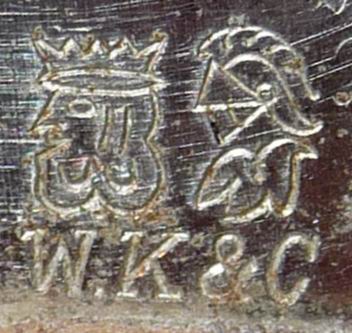Unfortunately, all I had was my iPhone when I took the pictures. The sword is in very good shape. I tried to take pictures of the etching on the blade. The scene depicted is of a caisson. The soliders appear to have the German-style pointed helmets. I could not get all the writing on the blade, so I photographed what I could. The maker's mark is unreadable, so I apologize for the quality.
George would like any information you can provide.
Thanks.
